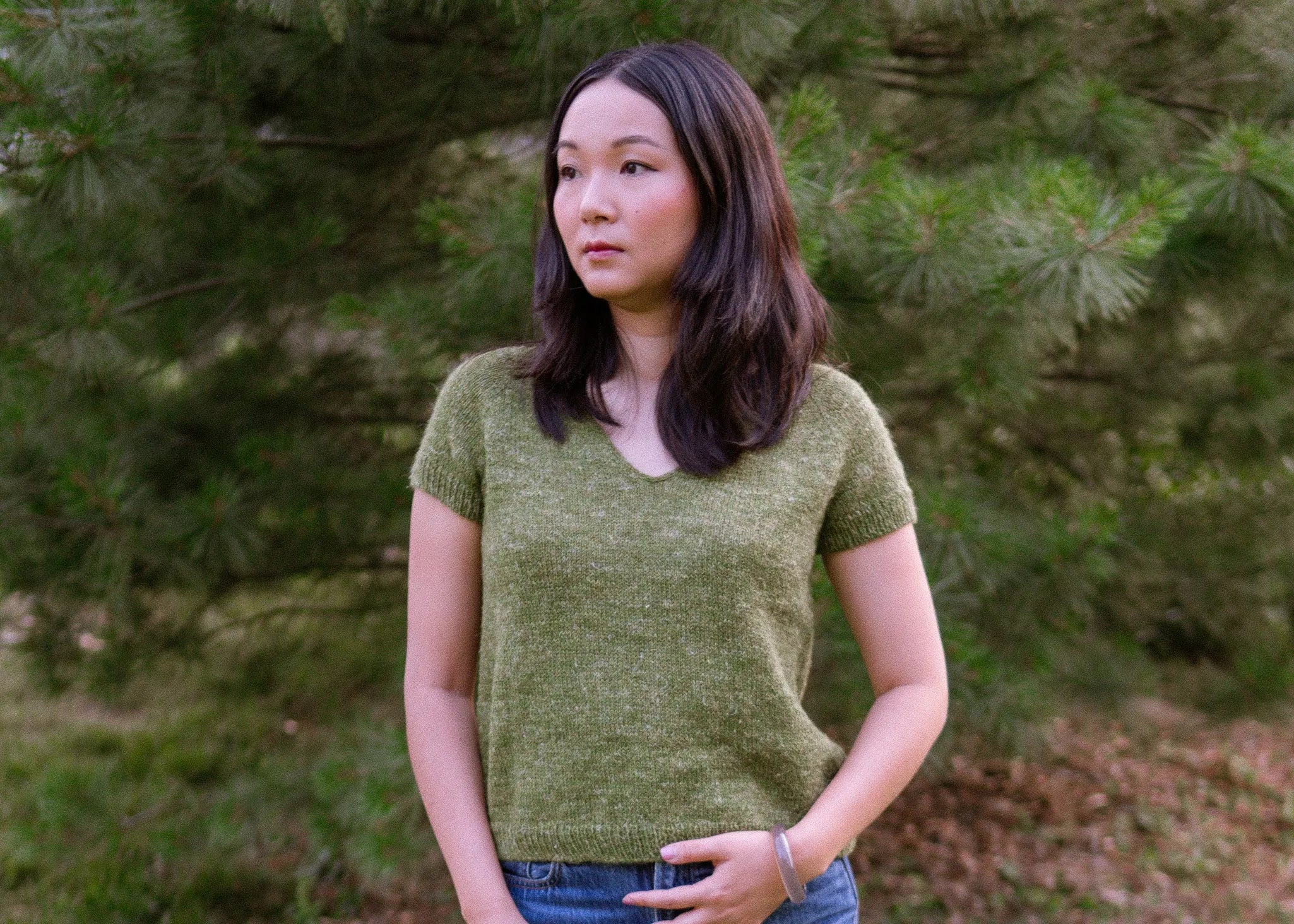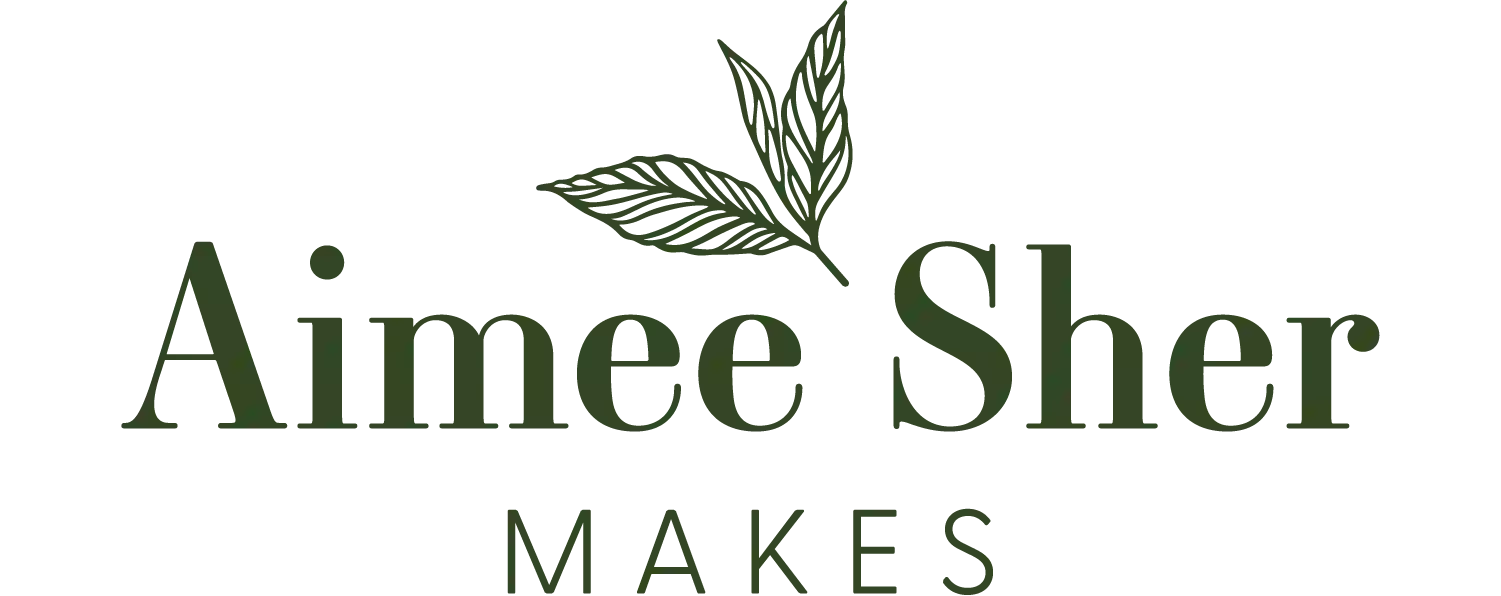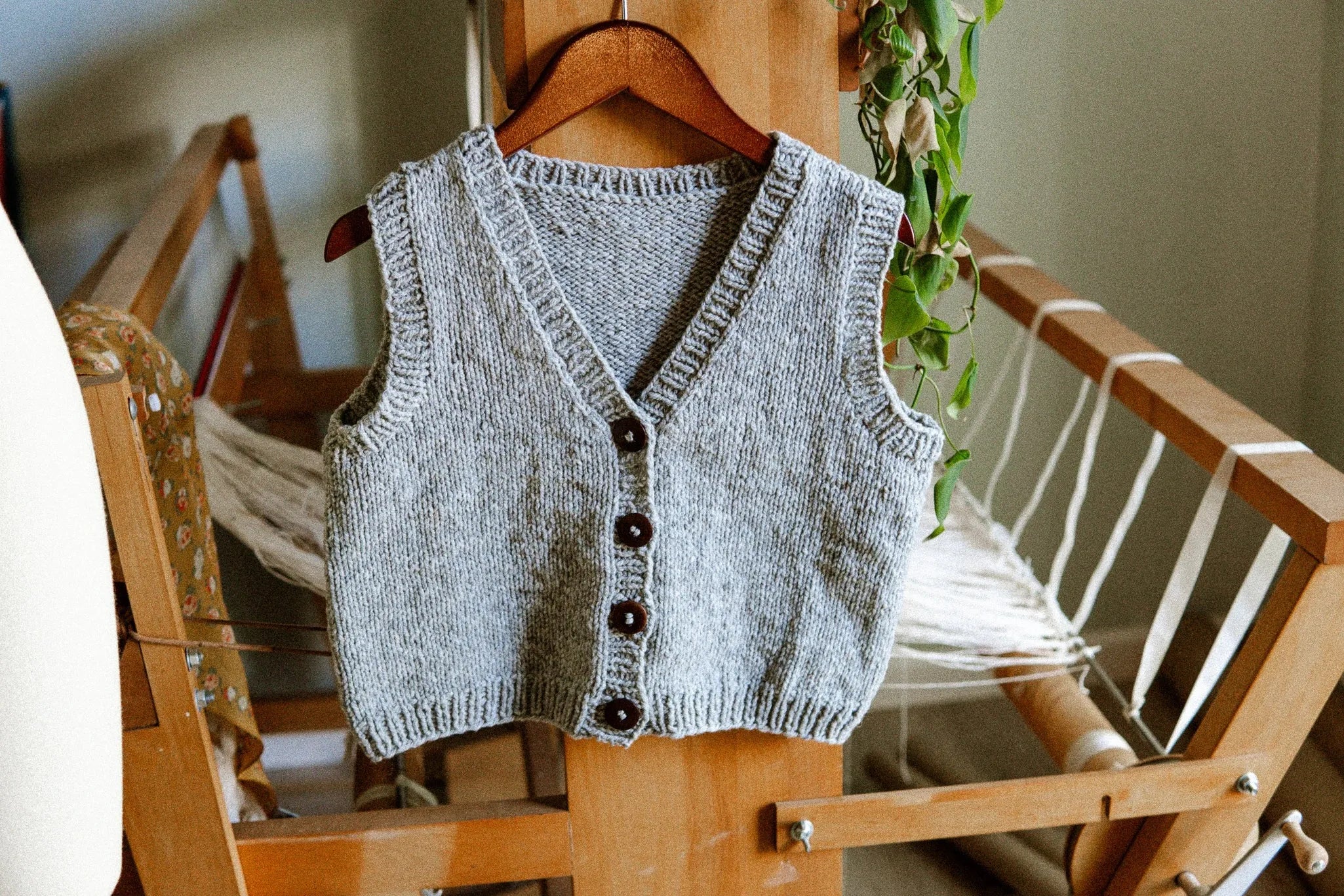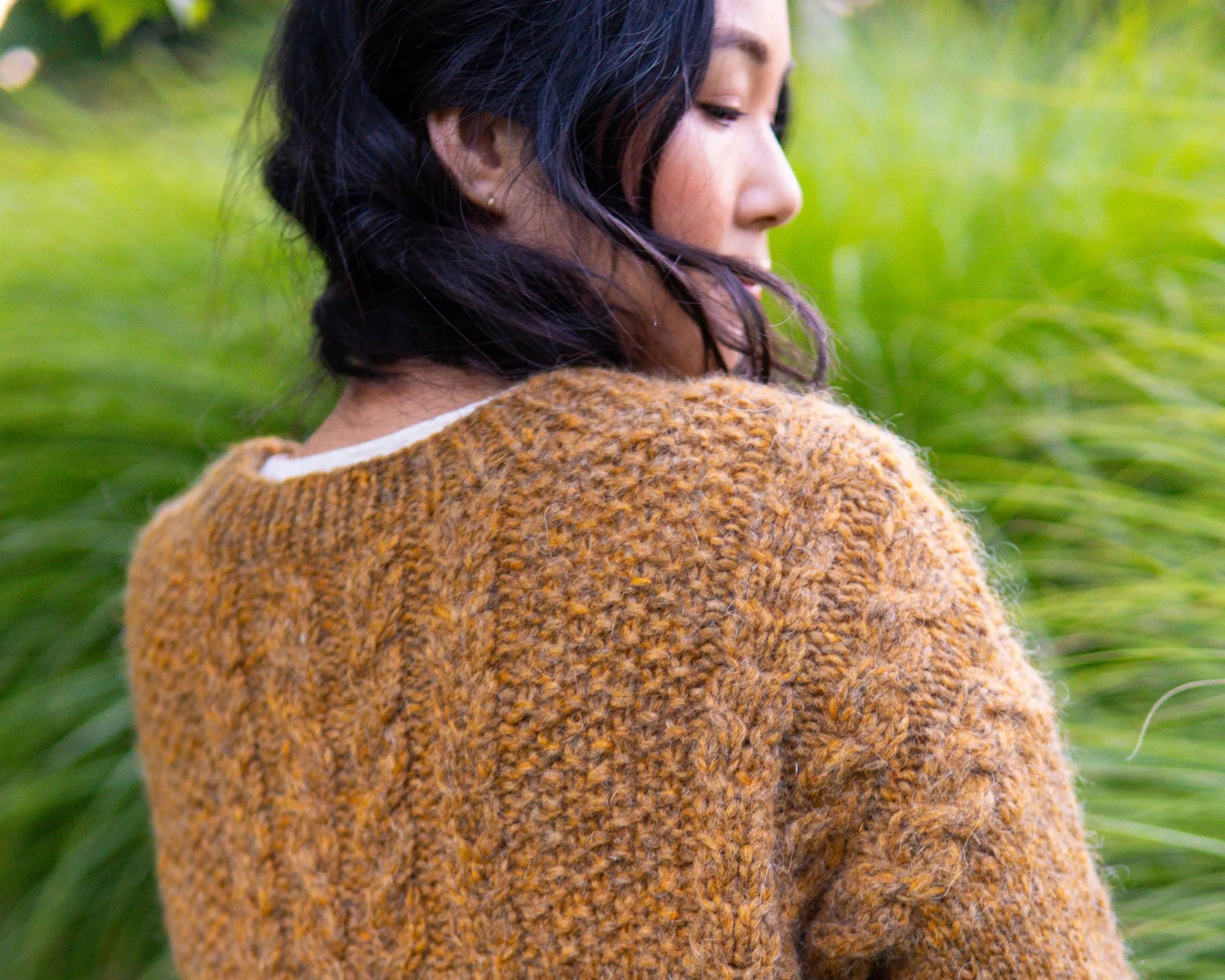
How to choose a size on knitting for sweater projects
Have you been knitting sweaters based on your full bust circumference measurement, and chronically ending up with baggy sweaters? It's not your fault, and I've got your back!
I'm here to help you pick a size so that your finished sweater has finished measurements that fit everywhere, not just in the full bust.
First, a disclaimer: every designer has their own different sizing charts and everyone is different, and none of us fit perfectly into a sizing chart. All of us have body measurements that vary from the size chart, and that is okay.
I want you to choose a size in my patterns that brings you the most comfort and the most joy in the knitting and the wearing.
Garment fits are incredibly subjective, but we can always look for some good practices.
This post is for you if you've ever:
- struggled with measuring yourself to choose the right size size
- consistently chosen sizes based the recommended ease on the finished garment measurements plus your actual chest measurement
- end up with a sweater with finished measurements that are too baggy, with way too much ease in the shoulders and armpits, even though you had met the correct gauge!
So jumping right in to it, let's look at the anatomy of the human person across the size range. We'll be covering which measurements will matter to sweater fit in which ares!
Shown here: The Directional Pullover
Actual bust measurements for bras
First things first, if you've got breasts, this area is hugely variable, even within a single pattern size. If you ever shop for a bra, then you know that the full bust is a very different thing from the underbust.
Plus, taking your own measurements can be a real bear when you don't know which measurements you might need.
For actual body measurements, you may have a 30" underbust, and have a 33, 35, or even 40" full bust. The difference between these two numbers is what determines the cup size of a bra.
Actual bust measurements for garments
In knitting world, designers always seem to advise us to choose a bust size based on the full bust measurement. Many designers won't even give you any other measurements to reference prior to purchase, if at all.
But in the sewing world, a critical measurement you must know for your body is the upper bust. This line runs above most of the bust tissue, and around the chest right in the armpit.
The difference between the upper bust and the full bust is what we call the sewing cup.
The standard knitting charts that most knitting pattern designers work on are assuming a really rigid set of cup sizes. The cup size is often smaller in the smallest cup sizes, around 0 inches of difference, and up to 5-6 inches in the larger sizes.
Now we have ourselves a real problem for sizing with the full bust measurement. If you have a 40" full bust, you might have a 32, 34, or even 38" upper bust measurement. This creates drastically different fit around the shoulder for people who all have the same full bust measurements.
Consider: if someone has is one of the larger sizes for cup size, with a 40" full bust with 34" upper bust, they'll have a much looser sweater around the shoulders neck compared to someone with a 38" upper bust.
Because breast volume varies so much from person to person, it's just not a reliable way to size for sweaters. Luckily, we have measurements that can help us make a better fit decision.
A better way to size for your best fit
The upper bust measurement encompasses the ribcage and where the body ends to join the arms. So you'll need to take your own measurements again. Make sure you include the full bust measurement AND the upper bust measurement. This will give you more information to work with as you move forward in size selection.
The most important thing to know is, this measurement helps predict likely shoulder widths, yoke circumferences, and neck widths.
By choosing a size by the upper bust, you can get a good fit through these areas. And this area plays an important role in frame your face and neck properly.
Plus, these areas are typically where nearly all the shaping happens and it's such an annoying area to have to mod. Better to start with good fit here, and add width or short rows in the bust and hips where needed.
You'll then be choosing a different size than the pattern recommends for positive ease or negative ease. And if you've typically have had trouble with sizing on the full bust measurement, you'll likely be choosing a smaller size than you are used to.
How I utilize the upper chest circumference measurement

Shown here: The Matthew Pullover
Since late 2022, all my patterns now list an upper bust measurement. I highly recommend that you size based on the upper bust.
If the the sweater pattern has little to even zero ease, I've also been implementing having a little more width in the front, compared to the back.
The best part is, if you have a large bust and have to choose based on the upper bust, or "size down" for it, you'll likely benefit from bust darts too, which will be built in for you already to get the right classic fit. I've covered this topic more thoroughly in a previous blog post about bust darts.
All my patterns since January 2023 have darts built in, so that you don't have to do the math to make your favorite sweater in my collections.
Modifications on patterns at large
If you are thinking "But Aimee, how am I supposed to pick the right size on a sweater pattern designed by another designer?" you are absolutely right. An important note is that I cannot tell you what other people's size charts indicate.
However, I can suggest that you choose patterns that have a line drawing, clear schematic measurements, and check out other people who've made that pattern to see how it fits on them.
However, if you've knit quite a few sweaters and they are always baggier than shown on the model, after you've met pattern gauge, I highly suggest choosing a smaller size, compared to the suggested amount of ease.
Do this at least once and start to get an idea of the fit you want around your neck and shoulders. Hopefully, this will get you started down the path to understanding your best fit and you can make further adjustments from there.
You can always add width (like more shaping in the raglan on the front only) where you need it, or add A-line shaping for a larger hip. Sleeve length is easy enough to adjust too, once you get the rest down.
The only part that might be tricky is accounting for the upper arm fit, which I'll cover in a future blog post, so don't forget to subscribe to my newsletter if you'd like to read that one too.
Finally...
If you are having trouble sizing for sweaters, you aren't alone! I really believe that it's the responsibility of designers to start moving towards helping our customers chose sizes more effectively.
This way, you can knit your favorite sweater ever with your best fit without too much guess work. And all your hard work on knitting a garment won't have gone to waste!
I hope that this blog post has been helpful to you, and that you can save it for your future reference.
If you'd like to see a 10 minute video version of this blog, check it out on my YouTube Channel.
I hope that I've given you something to think about if this is a pain point for you, and that you will give one of my own garment patterns a try.
My patterns are always size inclusive and thoughtfully shaped. Plus, all the recent ones come with a recommended upper bust measurement built in!
Please do leave us a comment if you enjoyed this article. And if you have trouble choosing a size for one of my patterns, you can always reach out to our pattern support specialist at support@aimeeshermakes.com.
More knitting fit resource blogs:





4 comments
Hi Francesca. For the new Cami pattern and all my patterns, I recommend then choosing between the two sized based on your desired target full bust ease! In this case, because you are a sewing D cup, I would recommend choosing size C curvy, which would get you to 38.25" finished ease which is exactly as intended.
Aimee Sher
Music to my ears. I sew my clothes and finding out I was a sewing D cup made my gaping armholes and shoulder fitting problems fixable. My only problem is I am exactly half way between two of your upper bust sizes, ie 34.25 and 37.5. Just under 36", with a 40" bust. I would really appreciate your opinion on which size to start with, please. Particularly because I am in love with your new cami pattern :).
Francesca
Thank you so much Linda!
Aimee Sher
Great blog post on the topic of sweater fit! Best information I’ve seen since Amy Herzog created the original CustomFit Designs.
Linda G.
Leave a comment
This site is protected by hCaptcha and the hCaptcha Privacy Policy and Terms of Service apply.